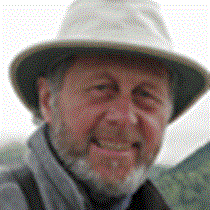Isla San Esteban & Isla San Pedro Mártir
While on vacation, few people really want to arise at 5:00 am. But for photographers, that is the best time of the day. Up we got, and off to the gull-lined shores of Isla San Esteban, a small but interesting gem in the island-constricted central portion of the Gulf of California. A clear sunrise was promised, together with the soft but ephemeral colours that so often paint the eastern skyline. Each of us had our own ideas about how to capture that one magnificent image - the picture around which we would recall memories of an adventure in a land of glowing desert and on a sea of expectations. Light filtered through giant cardónes and reflected off a rippled ocean. Our ship lay as a silhouette. Each of us was sure that we had “…made the best picture.”
With the sun higher and the temperature rising, we strolled up a wide arroyo in search of two endearing reptiles. The giant pinto chuckwalla and the spiny-tailed iguana reach impressive sizes on this island. Like all poikilotherms (cold-blooded animals), they depend on the morning sun to get their muscles moving. With many eyes searching, we soon found individuals of both species, some quickly retreating back into hiding and others posing as if unseen. Hungry iguanas dining on the moist petals of cardón flowers were favourite photo subjects, as were the dinosaur-like faces of the chuckwallas.
A brisk north wind proved to be an advantage to us for the afternoon. We were headed south and rode comfortably with the swells at our stern. Boobies, pelicans and tropicbirds wheeled high and low around the massive Isla San Pedro Martir. Some 19,000 pairs of blue-footed boobies and 13,000 pairs of brown boobies nest here, along with brown pelicans and high-flying red-billed tropicbirds. Guano miners lived and worked on this steep island in the late 1800s, scraping up tons of nutrient-rich bird guano for the fertilizer industry. Chemical substitutes soon put an end to this treacherous and foul job. The seabirds are alone here again, allowing the infrequent rains to wash nature’s nutrients back into the sea. Phytoplankton benefit and bloom, building the super-wide base to a food pyramid that helps to feed the people of Mexico and ultimately generates the diversity of life that attracts us here.
Our afternoon ended with a brief encounter with sperm whales, the huge and elusive toothed mammal that influenced Moby Dick and was the model for every child’s first drawing of a whale.



